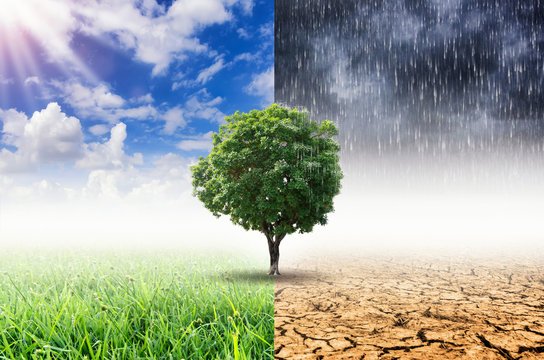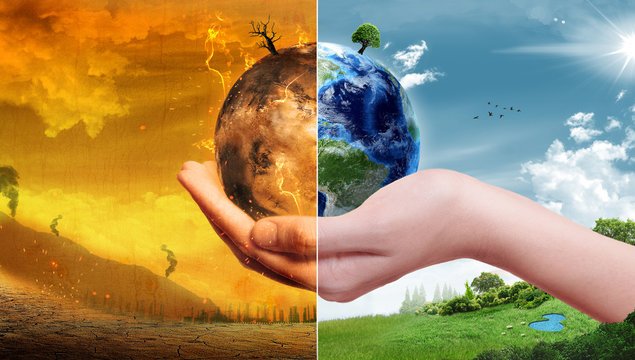In recent years, many governments around the world have been reversing or revising environmental regulations that were once aimed at addressing climate change. These policy changes have raised serious concerns about their long-term impact on the environment, our health, and even the global economy. In this article, we’ll explore the effects of these policy reversals, the reasons behind them, and what it could mean for our future.
Understanding Climate Policy Reversals
Climate policies are rules, laws, or initiatives created by governments to address the environmental challenges posed by climate change. These policies may include efforts to reduce greenhouse gas emissions, encourage renewable energy, or protect forests and wildlife. However, recently, some governments have rolled back or adjusted these policies, often in response to economic or political pressures.

Key policy areas that have seen reversals include:
- Emission Reduction Targets: Countries that once committed to reducing their carbon footprints have now backed away from these promises.
- Renewable Energy Investments: Funding for renewable energy projects such as wind and solar power has been cut or diverted elsewhere.
- Environmental Protection Laws: Regulations that limit pollution or protect endangered species have been weakened or eliminated.
Why Are Governments Reversing Climate Policies?
Several factors contribute to the reversal of climate policies. Some of the main reasons include:
- Economic Pressures: Governments often face pressure from industries that fear the financial costs of complying with strict environmental regulations. For example, oil and gas industries, manufacturing, and agriculture can face higher costs when forced to adopt cleaner technologies.
- Political Influence: Policy changes may also be influenced by political ideologies. Some political leaders may prioritize short-term economic growth over long-term environmental goals, fearing that stricter regulations could harm businesses and jobs.
- Global Competitiveness: Countries may feel that they are at a competitive disadvantage if they are implementing stricter environmental laws while other nations are not. This fear of losing economic advantage can lead to a weakening of environmental protections.
- Public Opinion and Misconceptions: In some cases, public resistance to climate policies based on misinformation or lack of understanding can lead to the rollback of those policies.

Impact on the Environment
The reversal of climate policies can have significant consequences for the environment. Some of the most concerning impacts include:
- Increased Greenhouse Gas Emissions:
- With weaker regulations on carbon emissions, industries are more likely to continue using fossil fuels, which release harmful greenhouse gases into the atmosphere. This contributes to global warming, more extreme weather events, and rising sea levels.
- Reduced Renewable Energy Development:
- Without proper government support, the transition to renewable energy slows down. Clean energy initiatives, such as wind, solar, and hydropower, may not receive the funding or regulatory support needed to thrive.
- Deforestation and Loss of Biodiversity:
- Weakening policies designed to protect forests and wildlife could lead to more deforestation. Forests play a critical role in absorbing carbon dioxide, and their destruction accelerates the impacts of climate change.
- Worsening Air and Water Pollution:
- Relaxed regulations on industrial waste and emissions can lead to more pollution. Air quality can deteriorate, and water sources could become contaminated with chemicals or plastics, affecting public health.
Impact on Human Health
The reversal of climate policies doesn’t just affect the planet—it also impacts human health. Poor air quality and polluted water sources can lead to respiratory illnesses, heart disease, and cancer. Extreme weather events, such as heatwaves, floods, and hurricanes, can result in loss of life, injuries, and displacement of communities.
Moreover, communities that rely on agriculture for their livelihoods could be affected by unpredictable weather patterns, crop failures, and water shortages. These challenges could exacerbate food insecurity and poverty.

Economic Consequences
The economic impact of climate policy reversals is complex. On one hand, some argue that fewer regulations mean lower costs for businesses, which can lead to short-term economic growth. However, in the long term, ignoring climate change can be costly. Some of the potential economic consequences include:
- Increased Disaster Recovery Costs:
- Extreme weather events are likely to increase in frequency and severity. Countries will have to spend more on disaster recovery and rebuilding, straining public budgets and insurance markets.
- Higher Healthcare Costs:
- Poor environmental quality, such as air pollution, is linked to various health problems. Governments could face rising healthcare costs as more people develop diseases related to poor environmental conditions.
- Job Losses in the Green Economy:
- A reduction in funding for clean energy and green technologies can lead to job losses in industries related to sustainability. Workers in renewable energy sectors could lose employment opportunities, slowing the transition to a low-carbon economy.
- Investment Loss:
- Investors are becoming increasingly aware of the risks posed by climate change. When governments reverse climate policies, it can lead to a loss of investor confidence in green technologies and sustainable businesses.
Global Implications: A Step Back for Climate Change Mitigation
Climate change is a global challenge that requires international cooperation. When one country rolls back its climate policies, it can undermine global efforts to tackle climate change. For example, the Paris Agreement, an international treaty aimed at limiting global warming to below 2°C, relies on the commitment of every country to reduce emissions. If a major economy backs out of its pledges, it can set back progress on the global scale.
Moreover, the reversal of climate policies can have a domino effect. Other nations may follow suit, fearing that they are being left behind in terms of economic growth and competitiveness.

What Can Be Done?
While the impact of climate policy reversals is concerning, there are still ways to address these challenges and move toward a more sustainable future:
- Pressure from Civil Society and Activism:
- Citizens, environmental groups, and activists can exert pressure on governments to protect climate policies. Public awareness campaigns and protests can help raise awareness and rally support for stronger environmental protections.
- International Cooperation:
- Global solutions to climate change require international cooperation. Countries should come together to share knowledge, technology, and resources to reduce emissions and protect natural resources.
- Investment in Innovation:
- Governments can support the development of new technologies and solutions to tackle climate change. For example, investment in carbon capture technology or green infrastructure can help mitigate the environmental damage caused by past policies.
- Renewed Focus on Sustainability:
- Governments must recognize the long-term value of sustainability. The future health of the planet and the economy depends on making decisions today that protect the environment for future generations.
Conclusion
The recent reversals of climate policies present a significant challenge, but they also highlight the importance of continued advocacy, innovation, and international cooperation. As the world faces an uncertain future with the effects of climate change becoming more pronounced, it is essential for governments and citizens to work together to protect the planet. The choices made today will shape the world we live in tomorrow.
Energy Emission Policies: State-Level Initiatives to Reduce Emissions Amid Rising Energy Demands






